Xinjiang, sprawling across the heart of Eurasia, is not only famed for its sweeping deserts and dramatic mountain ranges but also for a vibrant tapestry of flavors shaped by centuries of cultural exchange. From hearty communal dishes to enticing street eats, each bite tells a story of tradition and innovation. If you’re eager to embark on a gastronomic adventure through this land of contrasts, China Dragon Travel is ready to craft your personalized culinary journey.
1. Big Platter Chicken (Da Pan Ji)
A true showstopper, Big Platter Chicken begins with a whole chicken chopped into generous pieces, then braised alongside potatoes, chewy Sichuan-style flat noodles, and brightly colored peppers. The sauce is at once spicy and aromatic, coating each ingredient with layers of flavor. This dish represents the harmonious marriage of Xinjiang’s hearty heat and Sichuan’s signature numbing spice – a shared banquet that brings friends and families together over one massive platter.
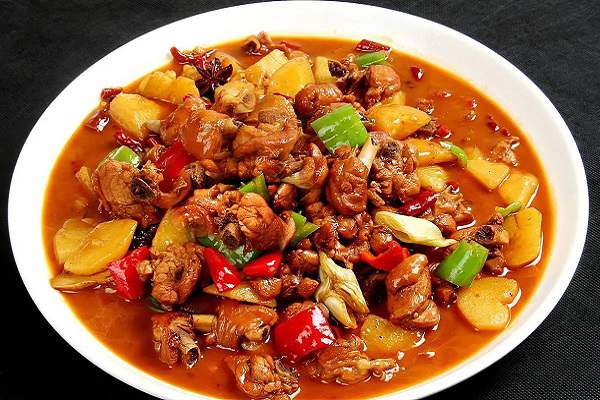
2. Pilaf (Hand‑Pulled Rice)
Known locally as “Polu,” this fragrant rice dish was traditionally eaten by hand but today is often served with a spoon. Fluffy grains from Ili’s dry‑land paddy fields are cooked with tender lamb, sweet carrots, and onions, resulting in a glossy, golden heap of rice. Rich in aroma and history, pilaf is more than just a meal—it’s a warm gesture of hospitality in every household.
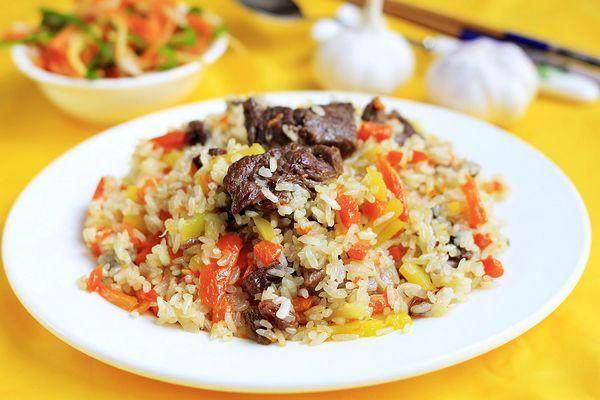
3. Roast Whole Lamb
Reserved for the grandest of celebrations, roasting a whole lamb is a rite of passage in Xinjiang. After careful cleaning and marinating in a blend of secret spices, the lamb is slow‑cooked in an underground pit lit with fruitwood embers. The result? Crisp, golden skin giving way to succulent, melt‑in‑your‑mouth meat, infused with a gentle smokiness.
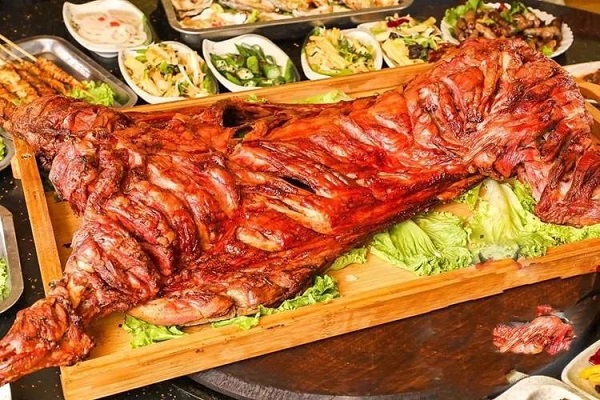
4. Yghur Bread (Nang)
“Nang” is the cornerstone of daily life in Xinjiang’s kitchens. This round flatbread, with its patterned surface, comes in multiple varieties—some thin and crispy in the center, others thicker and more doughy around the rim. Baked against the walls of a clay oven, nang carries the comforting aroma of wheat and lends itself to both sweet and savory pairings.
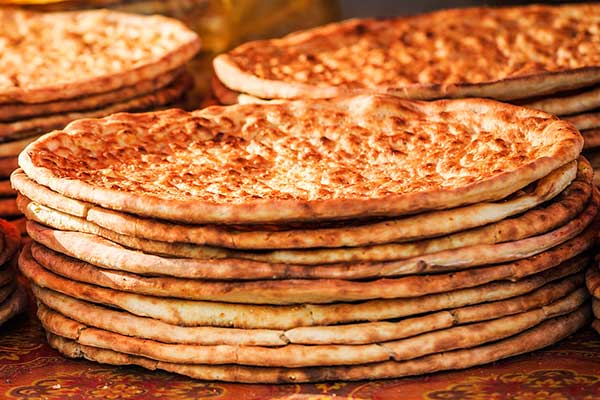
5. Baked Bao Buns (Kao Baozi)
No wander through a bazaar is complete without savoring a tray of baked bao buns. Enveloped in a crisp, paper‑thin dough, each square pocket brims with savory lamb, onions, and a hint of cumin. Popped straight from the oven, the bottoms are delightfully crunchy while the tops remain soft, making every bite an irresistible contrast of textures.
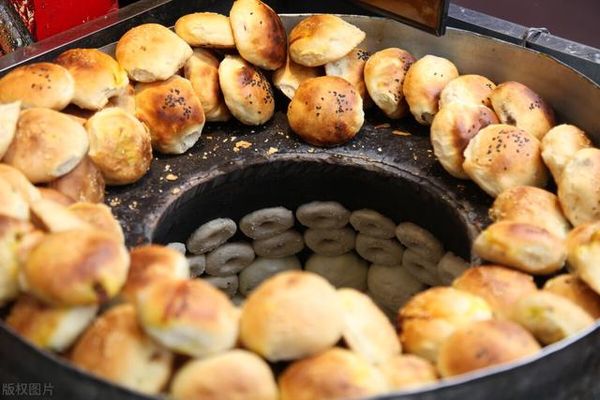
6. Xinjiang‑Style Stir‑Fried Rice Noodles
Introduced in the early 1980s, this noodle dish quickly became a local favorite. Thick rice noodles are stir‑fried with a custom chili paste, strips of lamb or beef, and a colorful medley of bell peppers and onions. The final touch is a dash of aromatic chili oil, turning this simple street food into a fiery celebration of Xinjiang’s fusion cuisine.
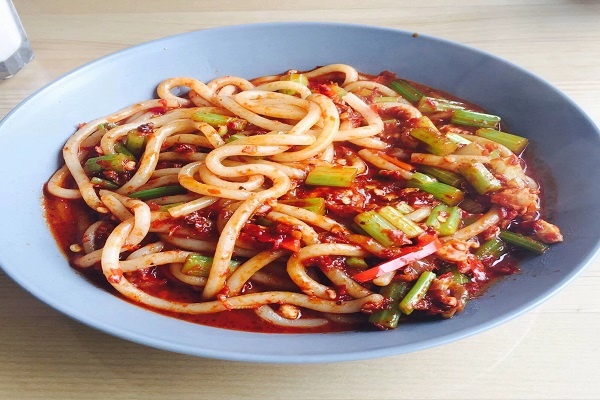
7. Thin-skinned Steamed Buns (Pitimanta)
“Pitimanta” refers to dumplings wrapped in impossibly thin dough that glistens when steamed. Inside, tender bits of juicy lamb mingle with aromatic onions and spices. Often enjoyed alongside nang or pilaf, these translucent parcels are finished with a sprinkle of black pepper, adding a final lift to their subtle richness.
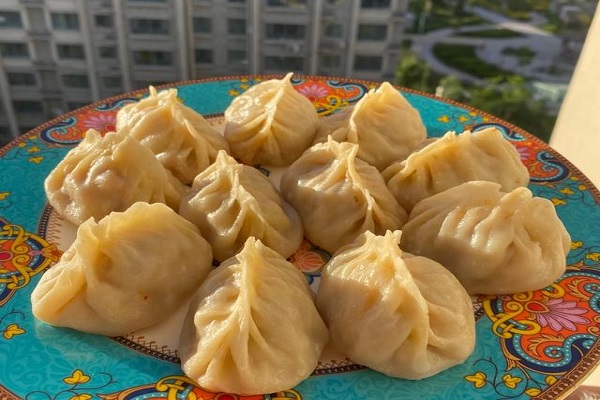
8. Pepper Numbing Chicken (Jiao Ma Ji)
A hallmark of the Hui community, this dish features bite‑sized pieces of chicken deep‑fried until crispy and then tossed with Sichuan peppercorns, chili flakes, and toasted sesame seeds. The result is a lively balance of crisp texture, tongue‑tingling heat, and nutty undertones—especially celebrated in Changji, where it’s considered the gold standard of pepper‑numbing chicken.
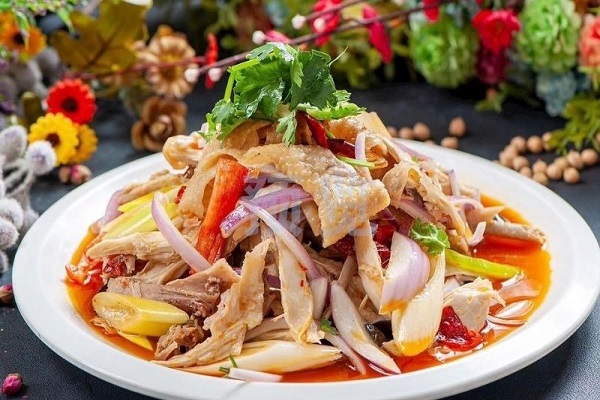
9. Xinjiang Lamb Skewers
Traced back over eighteen centuries, Xinjiang’s lamb skewers remain a timeless street‑food staple. Chunks of marinated lamb are threaded onto skewers and cooked over glowing coals, then dusted with salt, cumin, and chili powder. With each turn of the skewer, the meat turns tender and juicy, while the spices form an irresistible crust.
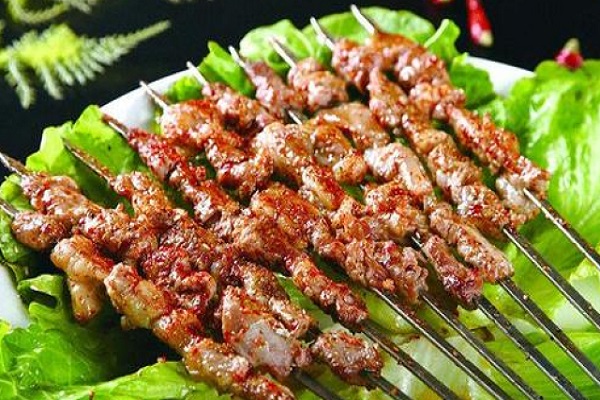
10. Xinjiang Mixed Noodles (La Tiao Zi)
Also called “vegetable‑topped noodles,” these hand‑pulled strands are tossed with an assortment of toppings, from strips of sautéed meat to stir‑fried vegetables. The classic variant – mixed noodles with fried pork – features crispy pork slices draped over chewy noodles, then drizzled with hot oil and a special sauce. Each forkful blends textures and flavors in perfect harmony.
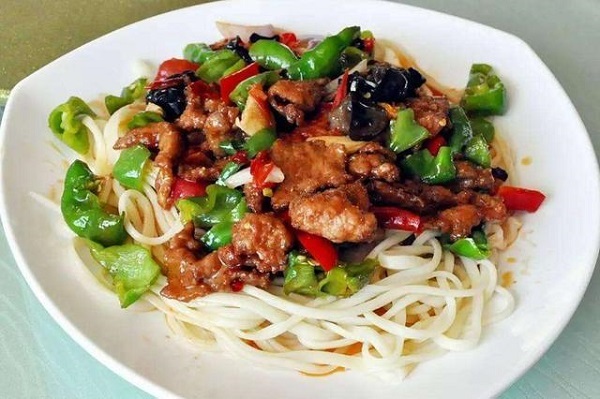
Ready to explore Xinjiang’s rich tapestry of flavors? From bustling bazaars to pastoral pit‑roast gatherings, China Dragon Travel specializes in crafting immersive culinary itineraries that dive deep into local traditions. Reach out today, and let us guide you on a journey that tastes as unforgettable as the landscapes you’ll traverse.












